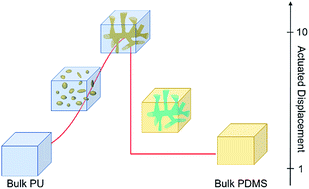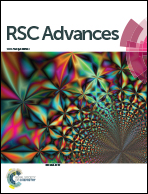Remarkably improved electromechanical actuation of polyurethane enabled by blending with silicone rubber
Abstract
Herein we report the highly improved electromechanical actuation of thermoplastic polyurethane (TPU) by blending with polydimethylsiloxane (PDMS) to construct a bicontinuous structure. TPU/PDMS blend films with various PDMS loadings were fabricated through a simple solution-assisted casting method. Infrared spectroscopy measurements confirmed that TPU and PDMS are thermodynamically incompatible with each other. For TPU80 with 80 parts of PDMS, a bicontinuous phase structure was achieved. The TPU80 film showed greatly decreased elastic modulus and improved elongation at break compared to pristine TPU. It also showed the highest dielectric constant among the TPU/PDMS blend films with various contents of PDMS due to strong interfacial polarization. Most importantly, the TPU80 film exhibited a maximum areal strain of 2.3% under an electric field of 40 V μm−1, which is about 60 times higher than that of pristine TPU. The results described in this work demonstrate that the construction of a bicontinuous interface structure at the micrometer scale is very effective to develop elastomers with superior electromechanical actuation performance.



 Please wait while we load your content...
Please wait while we load your content...